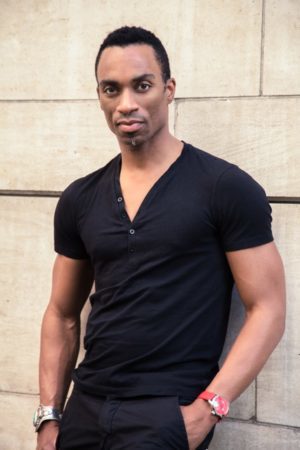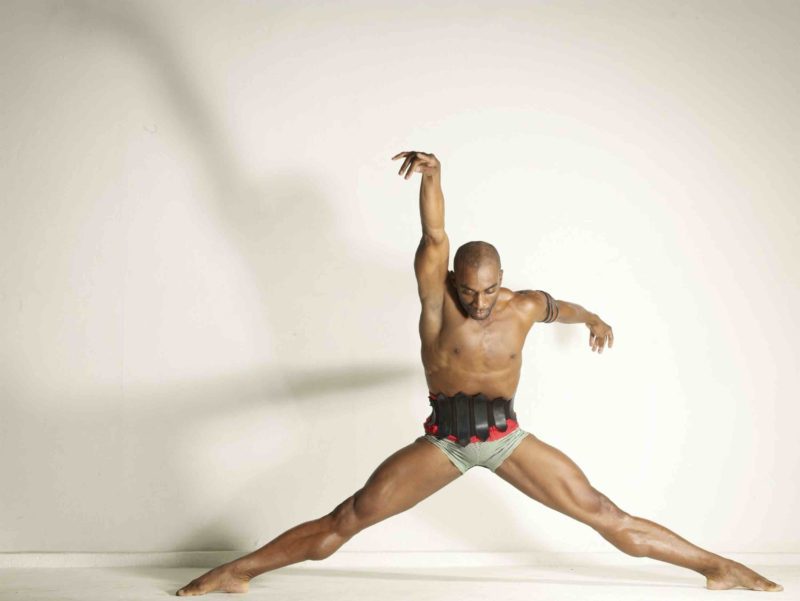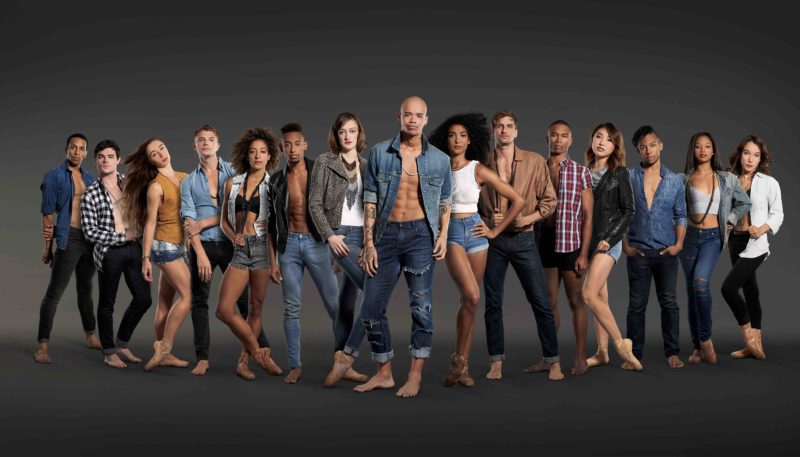INTERVIEW: Desmond Richardson prepares for ‘Complexions’ run at the Joyce

The dancers of Complexions Contemporary Ballet are ready to bring their unique dance movements to the esteemed Joyce Theater in New York City. Their programs for the two-week run will include works set to the music of a variety of musicians and composers, everyone from George Frideric Handel to Johann Sebastian Bach to David Bowie. Eclectic and energetic are two appropriate words for what Complexions promises at the Joyce.
Helping to spearhead the company’s efforts is legendary dancer Desmond Richardson, who serve as co-artistic director with choreographer Dwight Rhoden. Together the two have built Complexions from an idea in the early 1990s to one of the most respected contemporary companies in the world.
Richardson, who will dance at a special gala performance at the Joyce, seems quite excited for the upcoming engagement.
“Well, we have two exciting programs that are going on, and actually they’re two-act programs,” Richardson said recently in a phone interview. “One is a premiere of Dwight Rhoden’s Gutter Glitter, which is to music of various electronic composers and naturally Dwight himself. Then there is a fan favorite called Ballad Unto…, which is to Bach. There is a new pas de deux with our artists-in-residence that are coming back to dance called So Not A... like sonata, to the music of Handel.”
Another highlight of the program is Star Dust, a topical piece set to the music of Bowie. With the death of the iconic musician last year, audiences will surely be interested in seeing this new interpretation of his memorable songs, which will include “Heroes,” “Changes” and “Young Americans,” among others.
“We had been working on a suite of his various music for some time,” Richardson said. “That came to fruition last year in Detroit because we were told that he actually spent a great deal of time in Detroit researching … and it was very fitting that they actually requested us to do this particular piece, Stardust, at the music hall there in Detroit. And it just went off really beautifully, and the audience so enjoyed it. So we thought we should bring it to the Joyce as well because they have not had the opportunity to see it.”
Rhoden, the co-artistic director and resident choreographer, brought the idea of adapting Bowie’s music to Richardson. As the two began researching the musician’s catalog, they quickly realized how incredibly eclectic and movement-oriented the songs could be for a performance. “It really informs musicality, and thus we could answer it with movement,” Richardson said. “We thought the dancers really took to it beautifully, and so we’re here and excited to bring it to the Joyce.”

When building dance programs for an audience — both at the Joyce and when the company tours around the world — Richardson and Rhoden try to find balance for the evening. They are attempting to transport the audience and chart a choreographic journey. They consider the highs and lows, the natural crescendos and climaxes. In many ways, a Complexions program is like a classic five-act play with its rhythms and eventual denouement.
“We really think about that,” he said. “I think that’s something that Dwight really thinks about in terms of programming and programming for what will work together. That takes a lot of time. It’s not easy at all, but you have to take the time and just really feel it out. Once all the work is complete … then we rehearse it. Then you can feel the energy of the evening.”
Here’s how Richardson characterized Complexions’ early days: A suggestion came in that since so many companies were using choreography by Rhoden, there should be an evening fully dedicated to Rhoden’s pieces. Richardson and Rhoden knew each other as members of Alvin Ailey American Dance Theater, and they decided to partner together on this experiment. It took a while to realize the dream, but the dance company eventually emerged in the 1990s.
“We were already in the Ailey company, and so we just decided to pull it all together in one night,” Richardson said. “Thus Complexions was born 23 years ago at Symphony Space, 95th Street in Manhattan, and we sold out for three nights. And we thought that there’s something really palpable about our company, and maybe the energy, and the range of Dwight’s choreography and my artistic, if you will, acumen getting over to the dancers and the audience, that being passion and technique, of course.”
Richardson said Complexions’ journey is one defined by a unified and diverse community on the stage that is indicative of the society everyone wants to live in. “I would say that’s something that has really been a mainstay for us, that the amalgam of dancers that we bring in, we ask of them to really bring themselves to the work, meaning that their technical prowess be at a premium. … [They shouldn’t] be afraid to investigate all different forms of hip-hop, or house dancing, or any salsa or anything that’s thrown at you,” he said. “Obviously all the women dancers dance on pointe and some of the men actually, so that acumen has to be absolutely precise because that’s the difference with the style … which is contemporary ballet using the ballet idiom, which is the classicism, with the modern torso, and floor work and contact improv. We use all of those things within it, but the pointe work has to be premium.”
More than two decades after those initial sold-out performances, Richardson said he can’t believe that the original idea is still going strong. “To know that we’re continually touching people around the world, that is something, and we feel super blessed to continue to do so,” he said.

As a dancer himself, Richardson is in a league with few other peers. He was the first black American principal dancer of American Ballet Theater and received a Tony Award nomination for Fosse on Broadway. He also performed in After Midnight, Twyla Tharp’s Movin’ Out and Burt Bacharach’s The Look of Love, all on Broadway. He has danced with the Alvin Ailey American Dance Theater, Frankfurt Ballet, Bolshoi Theater, Royal Swedish Opera Ballet, Mariinsky Theater and San Francisco Ballet, among many, many others.
He will bring those talents to a piece for Complexions’ gala performance Thursday, Jan. 26. “I am excited for that, and, yes, I will be dancing a piece that Dwight choreographed for me last year to the music of David Rozenblatt. And the vocals are by Melanie Nyema, and the prose is by Dr. Maya Angelou. And it’s called Imprint/Maya, and it’s just an introspection in a particular space. And I’m really excited to actually dance this work because it’s very personal.”
From now until the Joyce run of performances, Richardson and the company will stay busy. In addition to managing the main company, there are considerations about the pre-professsional program and future tours. There is rehearsal after rehearsal, movement after movement, strenuous hour after strenuous hour. Complexions Contemporary Ballet seems to be dedication personified.
“Surely when we get to the Joyce, we want the audience not to see all that grit, but maybe they do see it,” Richardson said. “We want to show the audience a polished work, sure, but the grit, they can see that within the work, that the dancers are working hard. … These young dancers really go to the wall for us. They are 100 percent in, and they really push themselves to make sure they can speak through the movement and actually make sure that Dwight’s movement is speaking. That’s super important, too, that the choreography is speaking to the audience. That is what transports the audience. We are not to impose ourselves on it, but we are to be the instruments for his language. And that’s super important, and so throughout 23 years, we have been successful in doing so. And we want to continue that forward.”
By John Soltes / Publisher / John@HollywoodSoapbox.com
Complexions Contemporary Ballet will begin its two-week residency at the Joyce Theater in New York City Tuesday, Jan. 24. Click here for more information on the performances. Click here for more information on Complexions and Desmond Richardson.

